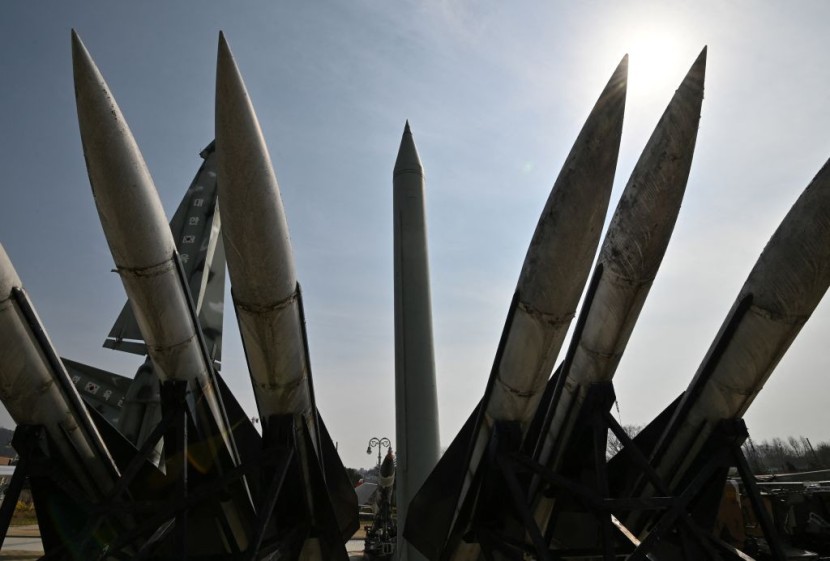
North Korea said Monday it test-launched an intermediate-range ballistic missile capable of hitting the US island of Guam.
It's the North's most major weapon launch in years, as Washington seeks to prove its commitment to its Asian allies with an undefined gesture.
As the North ramps up pressure on the Biden administration amid delayed nuclear negotiations, Sunday's launch might be a forerunner to larger provocations by North Korea, such as nuclear and long-range missile tests that represent a direct danger to the US mainland.
North Korea tested its most powerful missile since 2017
In the face of pandemic-related hardships and continuous US-led sanctions, some analysts believe North Korea's latest testing frenzy is aimed at seeking sanctions relief or world recognition as a legitimate nuclear state. They claim that if more restrictions are imposed on North Korea as a result of Sunday's launch, it may undertake more tests.
The goal of the test, according to the official Korean Central News Agency, was to check the overall accuracy of the Hwasong-12 missile that is being used by the country's military.
The Korean Central News Agency (KCNA) issued two sets of images, one of the rockets rising off a launcher and flying into space, and the other of North Korea and neighboring territories, which it said were captured by a camera attached to the missile's payload. Because the photographs' legitimacy could not be verified, the Associated Press opted not to use them, according to ABC News.
Officials from the United States and South Korea have warned that the launch on Sunday might lead to the resumption of long-range missiles and nuclear bomb testing. On Sunday, South Korean and Japanese authorities initially reported the launch which they described as a danger to regional security. The test, which was at least the eighth in January and one of the busiest ever for North Korea's expanding missile program, was not reported to have been attended by leader Kim Jong-un.
North Korea's self-imposed embargo on testing its longest-range intercontinental ballistic missiles has been lifted, according to South Korean President Moon Jae-in (ICBMs). After the announcement of the moratorium in 2018, which included a halt to nuclear weapons testing and was declared amid a flurry of diplomacy and summits with then-US President Donald Trump, Kim has stated he is no longer bound by it.
Because the United States and its allies have shown no signs of abandoning their "hostile policies," North Korea hinted this month that it may resume such tests. A senior US official said on Sunday night that the US shares fears that North Korea's accelerating missile tests might be predecessors to restart nuclear and ICBM tests, while asking Pyongyang to engage in direct negotiations without restrictions, as per Mirror.
Read Also : China's Warplanes Around Taiwan Pose New Threat; US Military Aircraft Circles Island Following Alarm
US urges to talk to North Korea
A senior US official told reporters in Washington that the United States is concerned that North Korea's escalating missile tests could signal a return to nuclear and intercontinental ballistic missile (ICBM) tests, and promised an unspecified response "designed to show our commitment to our allies."
In 2017, when North Korea conducted three nuclear tests, launched its biggest missiles, and elicited warnings of "fire and fury" from the United States, South Korean President Moon Jae-in said the latest flurry of North Korean missile testing was reminiscent of heightened tensions in 2017.
According to the North Korean state news agency KCNA, the test on Sunday "proved the accuracy, safety, and operational effectiveness of the manufactured Hwasong-12 type weapon system." The United States was not mentioned in the coverage of the launch by the state media, and Kim was not reported to have attended.
Officials from North Korea indicated this month that the tests are not aimed at any one country, but rather at self-defense. In the run-up to the New Year, Kim promised to strengthen North Korea's military capabilities in the face of the US and its allies' "hostile policies."
The Hwasong-12, according to North Korea, can carry a "large-size heavy nuclear warhead," with a range of 4,500 kilometers, according to experts (2,800 miles), Reuters reported.
Related Article : Kim Jong Un Visits Arms Factory as North Korea Confirms Series of Missile Launches, Vows To Bolster Diverse Arsenal
@YouTube
© 2026 HNGN, All rights reserved. Do not reproduce without permission.








